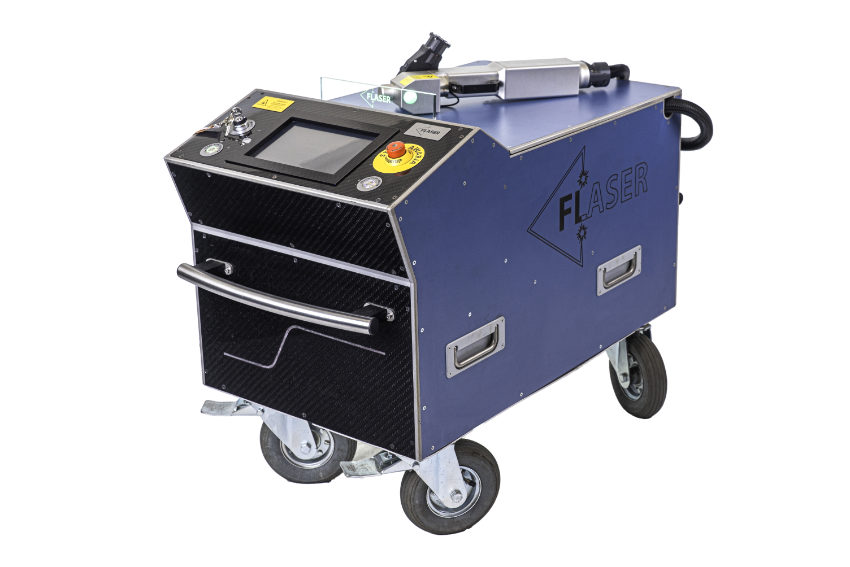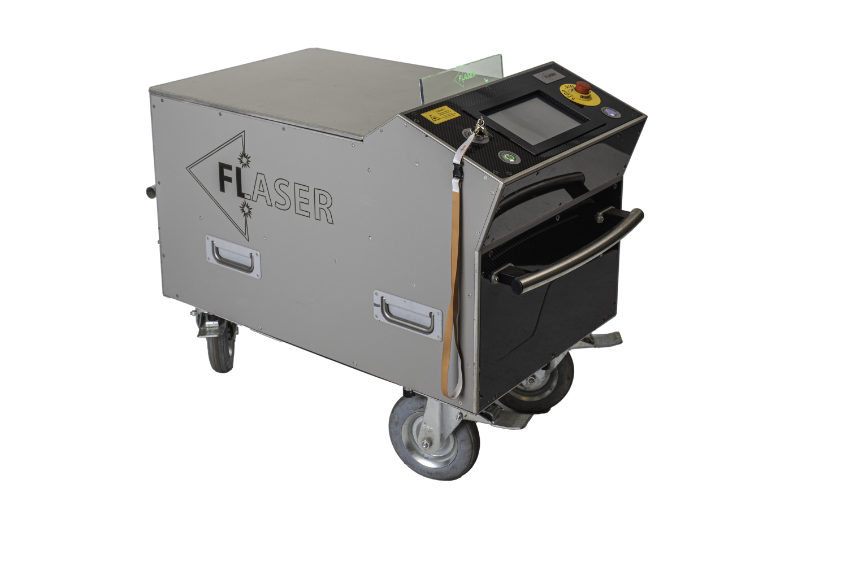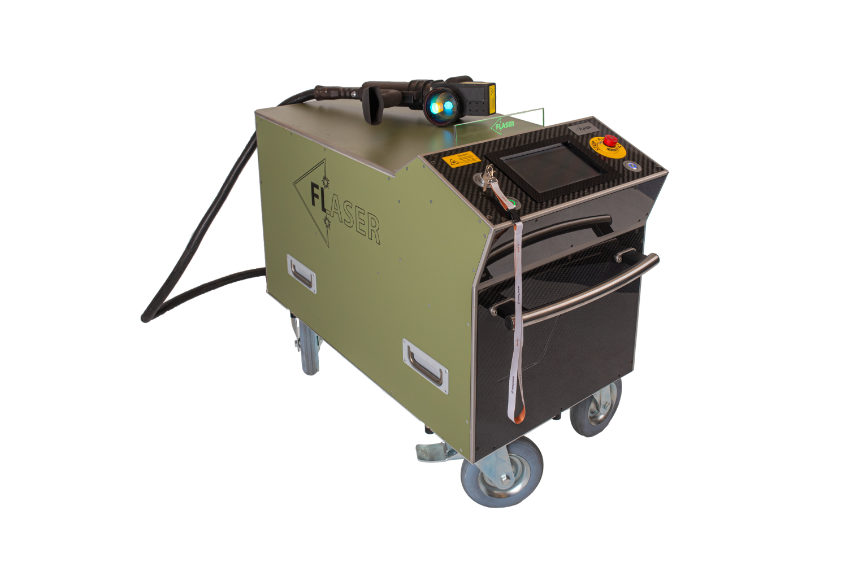FLASER was founded in 2019 and is a company consisting of laser technology enthusiasts and people associated with the laser cleaning industry. The company is engaged not only in the design and construction of laser systems – the team of professionals includes experienced engineers, certified monument conservators and people involved in broadly understood materials engineering.
They specialize in the production of handheld multimode lasers with high pulse energy and powers ranging from 200W to 500W.
Easy Engineering: What are the main areas of activity of the company?
Our main area of activity is the conservation of monuments and industry. Our devices are very effective in cleaning brick, stone, wood, and various types of sensitive materials. In industrial sectors, we primarily provide them to entities dealing with mold cleaning and applications that require achieving high-quality cleaned surfaces while meeting very strict environmental standards.
E.E: What’s the news about new products/services?
We are currently working on the prototype of the HULK 1000 laser. It will be a device with a power of 1000W and pulse energy of 100 mJ. We plan to use our proprietary head with an innovative beam scanning solution. The device will operate as a handheld machine and will also be equipped with a communication module, allowing it to work in automated systems on a robotic arm or directly on the production line.

E.E: What are the ranges of products/services?
Our offer includes both single-mode lasers intended for material processing and structuring, as well as multimode lasers. However, the main products we are developing are multimode lasers. Our flagship products are the HULK 200/300/500 series lasers. These are high pulse energy lasers ranging from 10 mJ to 100 mJ with a significantly larger spot size than single-mode lasers. These lasers achieve full power density at lower frequencies, resulting in reduced thermal impact on the material. Due to their parameters, they are more versatile and more commonly used for surface cleaning. We can clean practically all materials with them, from various metals to plastics, stone, wood, and paper.
E.E: What is the state of the market where you are currently active?
The market is still developing for these type of devices. Unfortunately, in our country, the laser cleaning industry is rapidly flooded with cheap devices from China. This is problematic because companies try to use these devices in applications requiring precise cleaning, and we often encounter damage to samples and materials processed by such lasers. After such cleaning, customers often become discouraged from the entire technology, not realizing the differences between various devices. Much time is still needed for education so that the market starts recognizing the technological differences between cheap devices from China and professional laser systems. On the other hand, with the gradual introduction of mobile laser systems with high power density, there is a continuous transformation of the existing cleaning market, not only industrial but also buildings and monuments. Traditional methods, both mechanical and low-power density lasers, either do not provide such cleaning quality (mechanical, chemical methods, etc.) or such efficiency and precision of cleaning (low-power density lasers). In this way, state of the market is definitely changing in favor of laser ablation.

E.E: What can you tell us about market trends?
One of the most significant trends in the market is the increasing focus on environmental responsibility. Both companies operating in conservation of monuments and widely understood industry are progressively seeking cleaning solutions that minimize environmental impact. Laser cleaning technology fits well within this demand due to its precision, efficiency, low power consumption and lack of chemical waste. The other important point while talking about the industry sector is growing trend towards automation and integration of various technologies used within the process which laser systems are well suited for. As industries strive for higher quality and more efficient processes, the demand for high performance laser cleaning systems is expected to rise.
E.E: What are the most innovative products/services marketed?
Laser cleaning sector is a relatively new niche and the market for it is till creating. From our point of view the most viable trend is the mobility of laser systems. That is why while we as Flaser are developing devices that have more energy and power output which enables our customers to clean wider range of materials, we have in mind that these need to be in portable form factor. We need to consider a lot of different aspects while making a project of a laser so both the person and a possible robotic arm will be able to reach its full potential.

E.E: What estimations do you have for 2024?
We are currently starting to fulfill more and more orders outside our country. We have launched the first laser in Canada and are now working on a device that will operate in Belgium. These are the largest devices from our HULK 500 series. Changes are happening gradually, but due to the benefits and costs, we estimate that in the next 5 years, surface cleaning methods using laser ablation devices with high power density will largely replace mechanical cleaning methods and significantly reduce cleaning with low-power density lasers.

